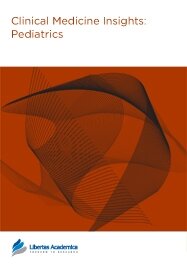

Publication Date: 05 May 2010
Type: Original Research
Journal: Clinical Medicine Insights: Pediatrics
Citation: Clinical Medicine Insights: Pediatrics 2010:4 1-10
doi: 10.4137/CMPed.S4311

Background: Ciclesonide is an inhaled corticosteroid administered by a metered dose inhaler (MDI) to treat bronchial asthma. After inhalation, the inactive ciclesonide is converted by esterases in the airways to active metabolite desisobutyryl-ciclesonide (des-CIC).
Aim: To compare the pharmacokinetic (PK) parameters of des-CIC in children after administration of therapeutic dose of ciclesonide with and without spacer (AeroChamber PlusTM).
Methods: Open-label, 3 period, cross over, repeated dose, PK study in 37 children with mild to moderate stable asthma (age: 6–11 y; body weight: 20–53 kg). During each 7-day treatment period, ciclesonide was inhaled once in the morning: A) 160 µg MDI with spacer, B) 80 µg MDI with spacer, and C) 160 µg MDI without spacer. Serum PK parameters of ciclesonide and des-CIC were determined on Day 7 of each period. The primary PK parameters were the AUC τ and Cmax for des-CIC.
Results: Inhaling ciclesonide with spacer led to a dose proportional systemic exposure (AUC τ) of des-CIC (0.316 µg*h/L for 80 µg and 0.663 µg*h/L for 160 µg). The dose-normalized systemic exposure for des-CIC (based on AUC τ) was 27% higher after inhalation of ciclesonide 80 µg or 160 µg with spacer than without spacer; the corresponding Cmax values for des-CIC were, respectively, 63% and 55% higher with spacer. No clinically relevant abnormalities or adverse drug reactions were observed.
Conclusions: Inhalation of therapeutic ciclesonide dose with spacer led to a slight increase in the systemic exposure of des-CIC, which does not warrant dose adjustment.
PDF (573.72 KB PDF FORMAT)
RIS citation (ENDNOTE, REFERENCE MANAGER, PROCITE, REFWORKS)
BibTex citation (BIBDESK, LATEX)
XML
PMC HTML

The publishing experience in Libertas Academica journals is unique. Readers can feel satisfied that publications are peer reviewed. Authors follow simple steps to reach final stage of publication. All readers have access to articles. Journal subscriptions or medical library access is not needed.
Facebook Google+ Twitter
Pinterest Tumblr YouTube